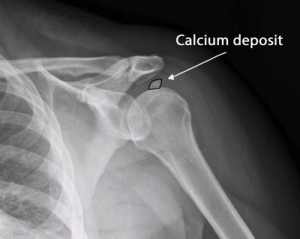

MedFriendly®


Arthrolith
An arthrolith means any loose solid substance in a joint.
A joint is a place where two bones contact each other.
An example of an arthrolith would be a hard deposit of
calcium. Arthroliths vary in size, with some being as
small as a tiny piece of gravel and others being much
larger. Their presence is usually not harmful. However,
they can cause joint pain (known as arthralgia) if they
find their way between the contacting surfaces of the
joints, thus rubbing against them when the joint moves.
Arthroliths can be present in any type of joint such as
ball and socket joints, the elbow joint, the knee joint, hip
joints, and joints in the hand, wrist, and spine.
Treating arthralgias with ice.
FEATURED BOOK: The Permanent Pain Cure for Joint Pain
Arthroliths can be removed with surgery, usually with the assistance of forceps (surgical
tweezers) or rongeurs. A rongeur is a strong instrument with a sharp-edge scooped tip
that is used to remove small rough parts of bone and other hard substances. The type of
doctor who would perform arthrolith removal is an orthopedic surgeon (bone surgeon). To
learn more about the science of joints, see the entry of arthrology. An arthrolith is
sometimes known as a joint stone or a joint mouse.
Arthrolith comes from the Greek word "arthron" meaning "joint," and the Greek word
"lithos" meaning "stone." Put the words together and you get "joint stone."
"Where Medical Information is Easy to Understand"™

A calcium deposit is a type of arthralgia.














